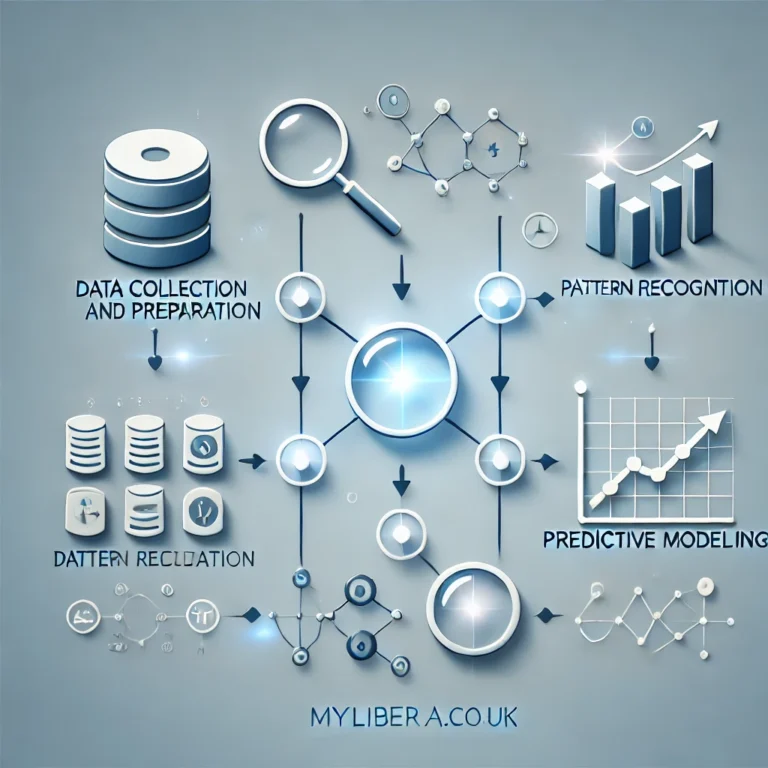Understanding the PLEG Algorithm: A Comprehensive Guide
The PLEG algorithm is gaining traction across industries as a powerful tool for optimization and problem-solving. Whether you’re a tech enthusiast or a professional seeking to expand your knowledge, understanding the PLEG algorithm can offer a significant edge in various applications. With its wide range of uses and transformative potential, the P algorithm stands out as a cornerstone of modern computational techniques. This article delves into the essentials of the P algorithm, how it works, its key features, and its practical applications across different fields.

What Is the PLEG Algorithm?
The P algorithm, short for Predictive Linear Equilibrium Generator, is a computational method designed to find solutions in complex systems. It excels at identifying patterns, predicting outcomes, and optimizing processes. Thanks to its flexibility, the P algorithm has become a go-to tool for industries like artificial intelligence, data analysis, network optimization, and even emerging technologies like quantum computing.
The P algorithm is particularly valued for its ability to analyze vast amounts of data and deliver precise results. It integrates seamlessly with existing systems, allowing organizations to unlock new levels of efficiency and innovation.
How Does the PLEG Algorithm Work?
At its core, the PLEG algorithm uses advanced mathematical models to analyze input data. The algorithm operates in three main phases, each essential to delivering accurate and actionable insights:
- Data Collection and Preparation: The P algorithm gathers relevant data from multiple sources, ensuring a comprehensive dataset for analysis. This phase often involves cleaning and standardizing data to eliminate inconsistencies.
- Pattern Recognition: Using sophisticated computational techniques, the P algorithm identifies trends and relationships within the data. This includes detecting anomalies, correlations, and emerging patterns that might otherwise go unnoticed.
- Predictive Modeling: Finally, the PLEG algorithm generates predictions or optimized solutions based on the identified patterns. These predictions can range from forecasting future trends to recommending specific actions for improvement.
This structured approach makes the P algorithm an invaluable tool for tackling complex problems in a systematic and efficient manner.
Key Features of the PLEG Algorithm
The PLEG algorithm boasts several standout features that make it a preferred choice for a wide array of applications:
- Efficiency: The P algorithm processes large datasets quickly, saving time and resources while delivering high-quality results.
- Accuracy: Its predictive capabilities ensure precise and reliable outcomes, even in highly variable or uncertain environments.
- Versatility: From healthcare to finance to supply chain management, the P algorithm finds applications in diverse industries, adapting to the specific needs of each field.
- Scalability: The algorithm can handle everything from small-scale projects to massive datasets, making it suitable for businesses of all sizes.
- Integration-Friendly: The P algorithm is designed to work seamlessly with existing platforms, tools, and workflows, ensuring a smooth implementation process.

Practical Applications of the PLEG Algorithm
The PLEG algorithm has revolutionized numerous fields by offering solutions that are both innovative and effective. Here are some of its most notable applications:
- Healthcare: In medical diagnostics, the PLEG algorithm predicts patient outcomes and recommends personalized treatment plans. Hospitals and clinics leverage it for resource allocation, disease outbreak prediction, and operational efficiency.
- Finance: Financial institutions use the PLEG algorithm for risk assessment, fraud detection, portfolio management, and investment optimization. Its ability to analyze market trends makes it indispensable for traders and analysts.
- Supply Chain Management: The PLEG algorithm optimizes logistics and inventory management, reducing costs and improving efficiency. It helps businesses predict demand, minimize waste, and streamline operations.
- Artificial Intelligence: In AI, the PLEG algorithm enhances machine learning models by refining prediction accuracy and improving decision-making capabilities. It plays a pivotal role in natural language processing, computer vision, and autonomous systems.
- Energy Management: The PLEG algorithm aids in optimizing energy consumption and distribution. Utility companies use it to predict peak demand, integrate renewable energy sources, and reduce overall energy costs.
- Retail and E-Commerce: Retailers benefit from the PLEG algorithm by using it for customer behavior analysis, personalized recommendations, and dynamic pricing strategies.
Why Learn About the PLEG Algorithm?
Understanding the PLEG algorithm can provide valuable insights for professionals and enthusiasts alike. It empowers individuals and organizations to:
- Improve decision-making processes by leveraging data-driven insights.
- Stay ahead of technological advancements and remain competitive in their industries.
- Contribute to innovative solutions that address real-world challenges.
- Enhance their understanding of computational techniques and their applications.
For students and professionals, mastering the PLEG algorithm can open doors to exciting career opportunities in data science, machine learning, and systems engineering. As more industries adopt this technology, the demand for skilled practitioners is expected to rise significantly.
Future of the PLEG Algorithm
As technology evolves, the P algorithm is expected to become even more advanced. Enhanced computational power, growing datasets, and advancements in areas like quantum computing will enable the algorithm to tackle increasingly complex challenges. Industries worldwide will likely adopt the PLEG algorithm as a standard tool for optimization and decision-making.
Additionally, researchers are exploring ways to improve the algorithm’s efficiency, making it more accessible for small and medium-sized enterprises. The future of the P algorithm looks promising, with potential breakthroughs that could redefine how we approach data-driven problem-solving.

Conclusion
The P algorithm is a groundbreaking solution that transforms data into actionable insights. Its efficiency, accuracy, and versatility make it indispensable in today’s data-driven world. By exploring the PLEG algorithm, you can unlock new opportunities and gain a competitive edge in your field.
Whether you’re looking to optimize processes, harness predictive analytics, or drive innovation, the P algorithm is a game-changer worth exploring. With its wide-ranging applications and promising future, now is the perfect time to dive deeper into the world of the P algorithm. By understanding and leveraging its potential, you can stay ahead of the curve and contribute to meaningful advancements in your industry.
FAQ
What is the PLEG algorithm?
The PLEG algorithm, short for Predictive Linear Equilibrium Generator, is a computational method designed to solve complex problems by identifying patterns, predicting outcomes, and optimizing processes. It’s widely used in industries such as artificial intelligence, data analysis, and network optimization.
How does the PLEG algorithm work?
The PLEG algorithm works in three main phases:
- Data Collection and Preparation – It gathers and standardizes data from various sources.
- Pattern Recognition – It analyzes the data to detect trends and relationships.
- Predictive Modeling – It generates actionable predictions or solutions based on the analysis.
What are the key features of the PLEG algorithm?
The PLEG algorithm is known for its:
- Efficiency – Fast processing of large datasets.
- Accuracy – Precise and reliable predictions.
- Versatility – Applications across multiple industries.
- Scalability – Handles projects of varying sizes.
- Integration-Friendly Design – Works seamlessly with existing systems.
Where is the PLEG algorithm used?
The PLEG algorithm is applied in several fields, including:
- Healthcare – For diagnostics and personalized treatment planning.
- Finance – For fraud detection, risk assessment, and investment optimization.
- Supply Chain Management – For optimizing logistics and inventory.
- Artificial Intelligence – For enhancing machine learning models.
- Energy Management – For predicting peak energy demand and integrating renewables.
- Retail and E-Commerce – For customer behavior analysis and dynamic pricing.
Why is the PLEG algorithm important?
The PLEG algorithm is a powerful tool for decision-making and optimization. By using data-driven insights, it helps organizations improve efficiency, reduce costs, and innovate effectively.
How can I learn more about the P algorithm?
To learn more, you can:
- Explore technical documentation and research papers.
- Take online courses on algorithms and data analysis.
- Experiment with practical implementations in real-world scenarios.
What is the future of the P algorithm?
The P algorithm’s future is promising. With advancements in computational power, machine learning, and quantum computing, the algorithm is expected to become even more efficient and widely adopted across industries.
Is the P algorithm difficult to implement?
While the P algorithm requires expertise in data analysis and computational methods, its integration-friendly design makes it accessible for organizations with technical teams or third-party support.
Who benefits most from the PLEG algorithm?
Professionals in fields such as data science, machine learning, healthcare, finance, and logistics benefit the most. Businesses of all sizes can also leverage the P algorithm to optimize their operations and decision-making.
How can I start using the P algorithm?
To get started, identify the problem you want to solve, gather your data, and either build a custom implementation or consult with experts who specialize in algorithmic solutions.


